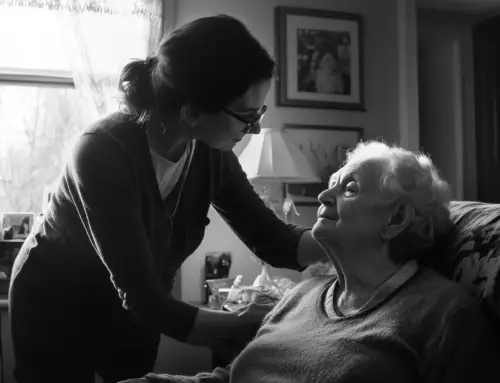Caregivers play a vital role in our society, providing essential support to millions of Americans who need assistance with daily living activities. These unsung heroes often sacrifice their own time, energy, and sometimes even their careers to care for loved ones who are elderly, disabled, or chronically ill.
In the United States, there are over 53 million unpaid caregivers, according to the AARP and the National Alliance for Caregiving. These individuals provide a wide range of services, from helping with basic tasks like bathing and dressing to managing medications and coordinating medical care. The value of this unpaid care is estimated to be worth billions of dollars annually, highlighting the significant contribution caregivers make to our healthcare system and economy.
However, caregiving can be physically, emotionally, and financially draining. Many caregivers struggle to balance their caregiving responsibilities with work, family life, and personal needs. This is where government assistance programs become crucial in supporting these dedicated individuals and ensuring they can continue providing quality care without sacrificing their own well-being.
Overview of Government Assistance for Caregivers
The U.S. government recognizes the importance of caregivers and offers various forms of assistance to support them. These programs aim to provide financial help, respite care, training, and other resources to ease the burden on caregivers and improve the quality of care they can provide.
Some of the key government assistance programs for caregivers include:
- Medicaid Home and Community-Based Services (HCBS) Waivers
- Veterans Administration Caregiver Support Program
- National Family Caregiver Support Program (NFCSP)
- State-specific caregiver support programs
- Social Security benefits for caregivers
- Tax credits and deductions for caregivers
These programs vary in their eligibility requirements, benefits offered, and application processes. It’s important for caregivers to research and understand the options available to them based on their specific situation and location.
One of the most significant challenges caregivers face is navigating the complex web of government assistance programs. Many are unaware of the help available or find the application process overwhelming. That’s why it’s crucial for caregivers to seek information and support from local Area Agencies on Aging, social workers, or caregiver support organizations to understand and access the benefits they’re entitled to.
How to Access Medicaid Assistance as a Caregiver
Medicaid is one of the primary sources of government assistance for caregivers, particularly through its Home and Community-Based Services (HCBS) Waivers. These waivers allow states to provide services to help people stay in their homes or communities instead of moving to a nursing home or other institution.
To access Medicaid assistance as a caregiver:
- Check eligibility: Medicaid eligibility is based on income and assets of the person receiving care. Each state has different requirements, so check with your state’s Medicaid office.
- Apply for Medicaid: If eligible, the person receiving care needs to apply for Medicaid. This can usually be done online, by phone, or in person at a local Medicaid office.
- Request an assessment: Once approved for Medicaid, request an assessment to determine the level of care needed and what services the person qualifies for.
- Explore consumer-directed options: Many states offer consumer-directed programs that allow the care recipient to choose their caregiver, which can include family members.
It’s important to note that not all states allow spouses or legal guardians to be paid caregivers under Medicaid. However, adult children, other relatives, or friends may be eligible to receive compensation for providing care. Check with your state’s Medicaid office for specific rules and regulations.
Medicaid’s Self-Directed Services programs are available in most states and can be an excellent option for family caregivers looking to get paid for their services.
Veteran Benefits for Family Caregivers
The Department of Veterans Affairs (VA) offers comprehensive support for caregivers of veterans through its Program of Comprehensive Assistance for Family Caregivers (PCAFC). This program provides a range of benefits to eligible caregivers of veterans who have a serious injury or illness incurred or aggravated in the line of duty.
Benefits of the PCAFC include:
- A monthly stipend paid directly to the caregiver
- Access to health care insurance through CHAMPVA (if the caregiver is not already covered)
- Mental health counseling
- Travel expenses when accompanying the veteran to medical appointments
- Respite care for up to 30 days per year
To be eligible for the PCAFC, the veteran must have a VA disability rating of at least 70% and require personal care services for a minimum of six continuous months. The caregiver must be at least 18 years old and be a family member or live full-time with the veteran.
Apply for the PCAFC online or contact your local VA medical center’s Caregiver Support Coordinator for assistance with the application process.
For veterans who don’t qualify for the PCAFC, the VA also offers the Program of General Caregiver Support Services (PGCSS), which provides resources, education, and support to caregivers of veterans of all eras.
Exploring State-Specific Caregiver Programs
In addition to federal programs, many states offer their own caregiver support initiatives. These programs can vary widely in terms of services offered and eligibility requirements, so it’s essential to research what’s available in your state.
Some common state-level caregiver support programs include:
- Respite care services
- Caregiver training and education
- Support groups
- Adult daycare services
- Home modification assistance
- Transportation services
To find state-specific programs:
- Contact your local Area Agency on Aging (AAA). Find your local AAA by visiting the Eldercare Locator website or calling 1-800-677-1116.
- Check your state’s Department of Health and Human Services website for information on caregiver support programs.
- Reach out to local caregiver support organizations or non-profits that may be aware of state and local resources.
Remember, even if your state doesn’t offer direct financial assistance, these support services can be invaluable in helping you manage your caregiving responsibilities and maintain your own well-being.
Financial Assistance and Grants for Caregivers
While direct financial assistance for caregivers can be limited, there are various grants and financial support options available that can help ease the financial burden of caregiving:
- National Family Caregiver Support Program (NFCSP): This program provides grants to states and territories to fund various supports that help family and informal caregivers care for older adults in their homes for as long as possible.
- Lifespan Respite Care Program: This program provides grants to states to implement coordinated systems of accessible, community-based respite care services for family caregivers of children or adults of all ages with special needs.
- Non-profit organizations: Many non-profits offer small grants to caregivers for specific needs. For example, the Alzheimer’s Association offers respite care grants in some areas.
- Local community grants: Some cities and counties offer small grants or financial assistance to caregivers. Check with your local government or social services department.
To find and apply for financial assistance:
- Research grants on Grants.gov
- Contact your local Area Agency on Aging for information on local financial assistance programs
- Reach out to disease-specific organizations (e.g., American Cancer Society, ALS Association) for information on caregiver grants related to specific conditions
Remember, while these grants may not cover all expenses, they can provide much-needed relief for specific caregiving costs or respite care needs.
Navigating Paid Leave and Insurance Options for Caregivers
Balancing work and caregiving responsibilities can be challenging. Fortunately, there are some options available to help caregivers maintain their employment while providing care:
- Family and Medical Leave Act (FMLA): This federal law allows eligible employees to take up to 12 weeks of unpaid leave per year to care for a family member with a serious health condition. While the leave is unpaid, it protects your job and health insurance.
- Paid Family Leave: Some states offer paid family leave programs that provide partial wage replacement for employees who take time off to care for a family member. As of 2024, California, New Jersey, Rhode Island, New York, Washington, Massachusetts, Connecticut, Oregon, and Colorado have paid family leave programs.
- Employer-sponsored benefits: Some employers offer paid leave, flexible work arrangements, or other benefits for caregivers. Check with your HR department to see what options are available.
- Long-term care insurance: If your loved one has long-term care insurance, some policies may cover in-home care provided by family members. Review the policy or contact the insurance provider for details.
- Life insurance policies: Some life insurance policies offer accelerated death benefits or life settlements that can be used to pay for care, including compensating family caregivers.
When considering these options, it’s important to weigh the short-term financial impact against the long-term benefits of maintaining your job and career progression. Consult with a financial advisor or employment lawyer if you’re unsure about the best course of action for your situation.
The Importance of Respite Services for Caregivers
Respite care is a crucial support service for caregivers, providing temporary relief from caregiving duties. It allows caregivers to take a break, attend to personal needs, or simply recharge. Respite services can significantly reduce caregiver stress and burnout, ultimately improving the quality of care provided.
Types of respite services include:
- In-home respite care
- Adult daycare centers
- Short-term nursing home stays
- Respite camps for children with special needs
To access respite services:
- Contact your local Area Agency on Aging for information on respite programs in your area.
- Check if your state has a Lifespan Respite program, which aims to improve access to quality respite services.
- Explore respite services offered through disease-specific organizations (e.g., Alzheimer’s Association, American Cancer Society).
- Look into respite care benefits offered through Medicaid HCBS waivers or the VA Caregiver Support Program if applicable.
Remember, taking regular breaks is not a luxury—it’s a necessity for maintaining your own health and well-being as a caregiver. Don’t hesitate to use respite services when needed.
How to Become a Paid Family Caregiver
For many family caregivers, the financial strain of reducing work hours or leaving a job to provide care can be significant. Becoming a paid family caregiver can help alleviate this burden. Here are steps to explore this option:
1. Check Medicaid programs: Many states offer self-directed Medicaid programs that allow care recipients to hire family members as caregivers. Contact your state Medicaid office for information.
2. Explore veteran programs: If you’re caring for a veteran, look into the VA’s Program of Comprehensive Assistance for Family Caregivers.
3. Investigate state programs: Some states have programs that pay family caregivers using state funds. Contact your local Area Agency on Aging for information.
4. Consider long-term care insurance: If your loved one has a long-term care insurance policy, check if it covers care provided by family members.
5. Look into Home and Community-Based Services (HCBS) waivers: These Medicaid waivers often allow for consumer-directed care, which can include hiring family members.
6. Get certified: Some states require family caregivers to complete training or certification to be eligible for payment. Check your state’s requirements.
Remember, rules and eligibility can vary significantly by state and program. Always verify the specific requirements and restrictions with the relevant agency or program administrator.
Challenges and Solutions in Caregiving
Caregiving, while rewarding, comes with its share of challenges. Some common issues caregivers face include:
Burnout and stress
- Challenge: The demands of caregiving can be overwhelming.
- Solution: Prioritize self-care, use respite services, and join support groups.
Financial strain
- Challenge: Caregiving can impact your ability to work and save.
- Solution: Explore financial assistance programs, tax deductions, and flexible work arrangements.
Lack of training
- Challenge: Many caregivers feel unprepared for their responsibilities.
- Solution: Take advantage of caregiver training programs offered by local organizations or online resources.
Isolation
- Challenge: Caregiving can be isolating.
- Solution: Stay connected with friends and family, join caregiver support groups, and use technology to maintain social connections.
Navigating the healthcare system
- Challenge: Managing medical appointments and treatments can be complex.
- Solution: Use care coordination services offered by some insurance plans or hire a geriatric care manager.
Balancing caregiving with other responsibilities
- Challenge: Many caregivers struggle to balance caregiving with work and family life.
- Solution: Explore flexible work options, delegate tasks when possible, and use time management tools.
Remember, asking for help is not a sign of weakness but a strategy for sustainable caregiving. Don’t hesitate to reach out to family, friends, or professional services when you need support.
Future Trends in Government Support for Caregivers
As the population ages and the demand for caregivers grows, there’s increasing recognition of the need for more comprehensive support for caregivers. Several trends are emerging in government support for caregivers:
- Expansion of paid family leave: More states are considering or implementing paid family leave programs that include caregiving for adult family members.
- Increased funding for home and community-based services: There’s a growing emphasis on supporting care at home rather than in institutional settings, which could lead to more resources for family caregivers.
- Recognition of caregivers in healthcare teams: Some initiatives are working to better integrate family caregivers into healthcare decision-making and planning.
- Technology support: Programs to provide caregivers with training and access to technology that can assist with caregiving tasks are becoming more common.
- Caregiver tax credits: There are ongoing discussions at the federal level about implementing tax credits for family caregivers.
- Expansion of respite care services: Recognizing the importance of caregiver well-being, there’s a trend toward increasing availability and accessibility of respite care.
As these trends develop, it’s important for caregivers to stay informed about new programs and benefits that may become available. Regularly check with your local Area Agency on Aging, state health department, and caregiver support organizations for updates on new initiatives and support programs.
Remember, your role as a caregiver is invaluable, and there are resources available to support you. Don’t hesitate to seek out the assistance you need and deserve.




